Among the many (many) reasons we succulent lovers are fascinated by these plants is the extraordinary richness and diversity of forms and textures they display. We often come to prize the more unusual varieties. Nowhere will you find more strange, unusual, and incredibly cool forms than among crested succulents and monstrose cactus. Like most variegated succulents, both cristata succulents and “monster cactus” are the result of abnormal development of the plant. This is a naturally occurring phenomenon that is tricky to reproduce. Cresting causes wildly curved, twisted, and undulating plants that look very different from un-crested forms. Crested cacti often look like writhing snakes, coral, or even human brains. Maybe you’re intrigued by these curiosities. Or maybe you have a plant displaying strange growth and want to understand it. Learn why some succulents and cactus crest and how to care for them.
Crested Succulents & Monster Cactus
In this Post We'll Cover:
{Please note, some links in this post may be affiliate links to sites that pay me a small commission if you click on the link and make a purchase. This commission is at absolutely no cost to you. I only recommend products and companies that I have worked with and truly love! ~Kat}
What are Crested Succulents and Cactus?
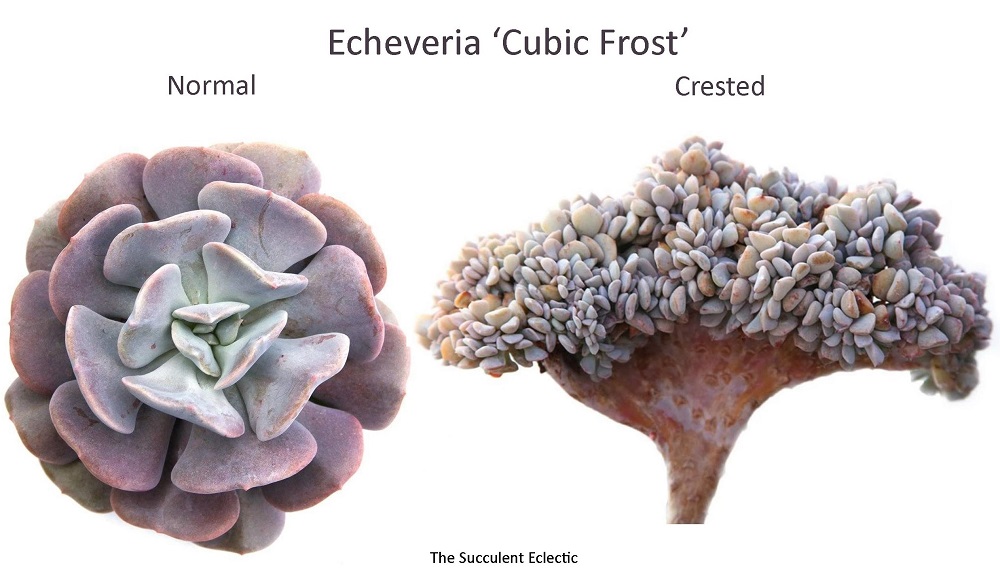
photo credit Leaf Clay
To understand crested succulents and cactus, let’s first look at how normal plants grow and develop. We’ve covered the nature of meristemMeristem (MEHR-i-stem) tissue in plants contains undifferent... tissue when we looked at propagating succulents by leaves as well as stem cuttings. Meristem tissue is made up of immature cells that can develop to become anything the plant needs – stem, root or leaf. Its like stem cells in animals.
The meristem tissue at the very tips of roots and shoots is called apical meristem. It forms a small point at the apex that is responsible for the plant’s primary growth. Apical meristem tissue makes the plant grow taller, developing more leaves for photosynthesisPhotosynthesis (FO-to-SIN-thuh-sis) is the process plants us... More. At the same time, apical meristem on the roots grow longer, wider-spreading roots to reach and access more water in the soil. These are critical functions for the plant. While all meristem tissue is capable of growth in the right circumstances, apical meristem tissue does grow and is responsible for the plant’s shape and size.
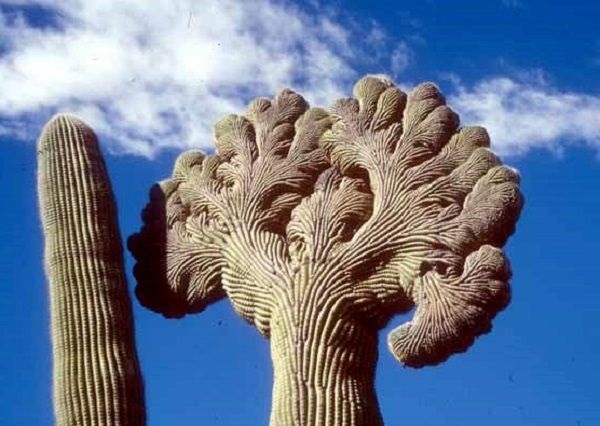
photo credit NPS
A crested cactus or succulent is the result of a genetic defect in the apical meristem. The apical meristem tissue of a normal saguaro cactus cause the classic vertical, columnar shapes. Occasionally the cactus branches, but most of its growth continues to reach for the sky. When a saguaro crests, the apical meristem no longer forms a single point. Instead, it forms a broad line, with new growth points forming all along that line. The resulting plant shape becomes wildly distorted and contorted along that line. As the plant grows taller and wider along the resulting crest, the plant begins to curl and fold in upon itself. A crested succulent or cactus has the Latin word cristata added to its botanical name. So we call a saguaro (Carnegiea gigantea) that crests a Carnegiea gigantea cristata.
What is a Monstrose Cactus or Succulent?
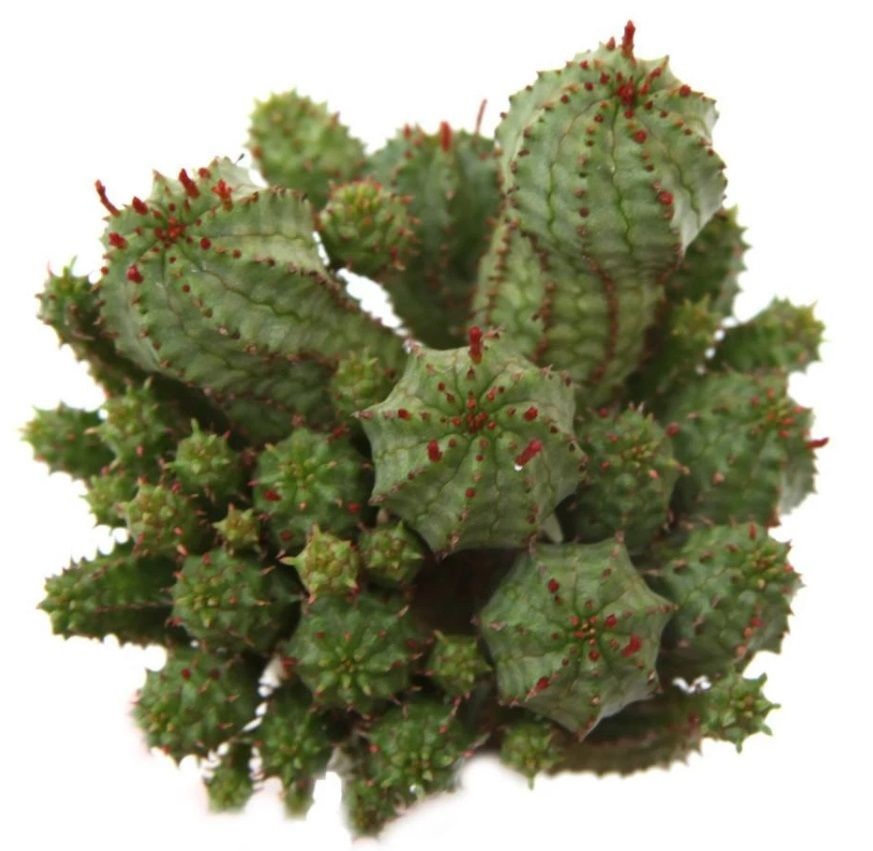
Monstrose is another form of a genetic defect in the apical meristem of a plant. The organized points of new growth become random, forming all over the body of the plant, causing new growth to form anywhere. A crested cactus or succulent still displays organized growth with a predisposition toward symmetrical development. A monstrose cactus, however, develops in random growth points all over the plant. This results in a lumpy, knobby, asymmetrical shape. Sometimes monstrose cactus develop bizarre corkscrew spirals or extra ribs with very few or deformed spines. Like crested succulents, monstrose cactus are highly sought after and collectible plants.
Monstrose cactus are often referred to as monster cactus. The two words share the same root word — monstrum, meaning birth defect with abnormal, disfigured growth. While animals with weird deformities might appear to us as monsters, in plants, the same genetic mix-ups often turn out looking bizarrely cool.
What Causes Cresting and Monstrose Development in Succulents?
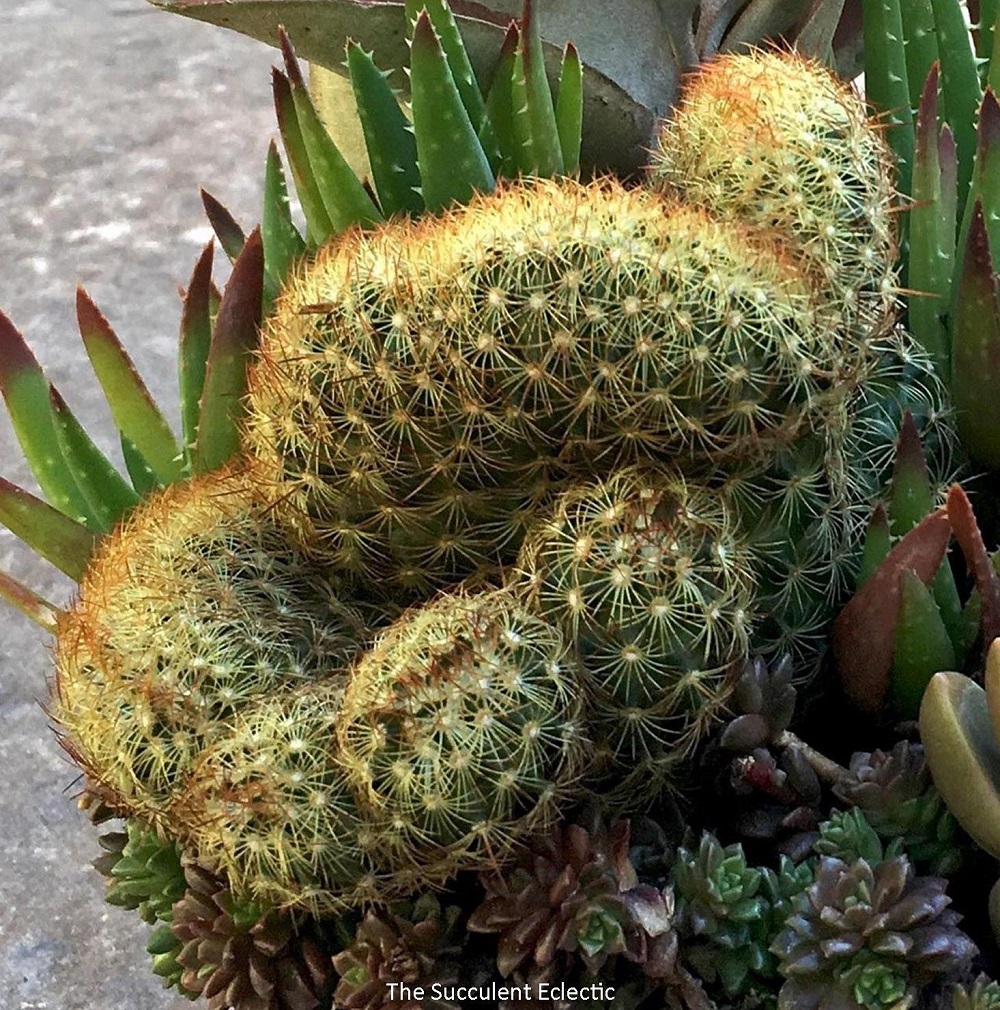
Although both cresting and monstrose forms are the result of genetic defects, they cannot be inherited. Generally, a crested or monstrose plant is the result of an injury to the apical meristem of a young plant. This injury might be the result of wind, weather, insects, bird or animals. Sometimes a nutritional deficiency or hormone imbalance can lead to cresting or monstrose. It can result from disease or infections, or even seem to occur spontaneously when cells divide improperly. When the cells respond to the injury with fast, somewhat organized growth, it forms a crest. When the new growth occurs all over the plant, that is a monstrose. Any type of plant can develop a crest or monstrose, but they do seem more common with cactus and succulents. Likely, the tough nature of these plants makes them better able to survive to maturity even with genetic defects than other plants.
Because cresting and monstrose formations result from injury to the plant, the abnormal growth is not typically passed on to the plant’s offspring. An injured parent doesn’t develop an injured offset. However, some cactus and euphorbia varieties are more likely to crest than others. And this predisposition is hereditary. You may see both crested and normal development on the same plant. You may even see all three forms, with monstrose growth in the mix. A plant may crest at any point in its life, but monstrose typically develop only in very young plants.
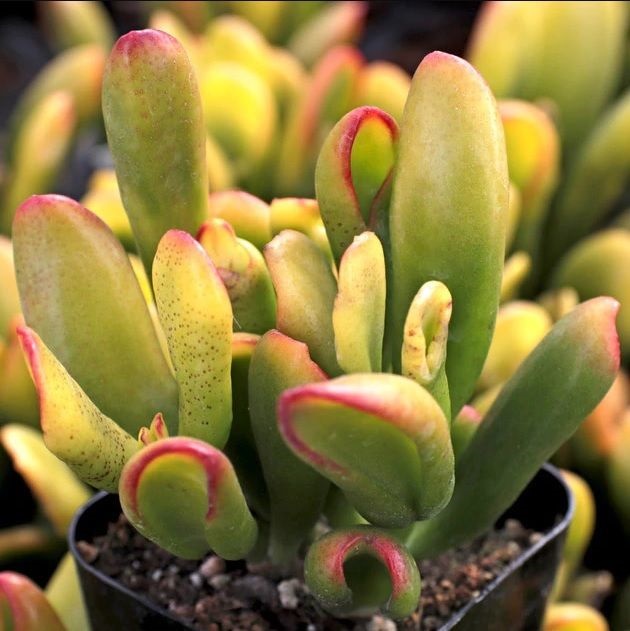
photo credit Mountain Crest Gardens
There are a very few varieties that do reliably pass their peculiarities on to their offspring and can be readily reproduced through cuttings. Notable among these are the Crassula ovata Hobbit, Gollum and ET’s Fingers varieties of the ever-popular jade plant. Not only do these charming plants resemble the outstretched fingers of some inhabitants of Middle Earth, but these succulents also thrive in low light, indoor conditions.
Care for Crested and Monstrose Succulents
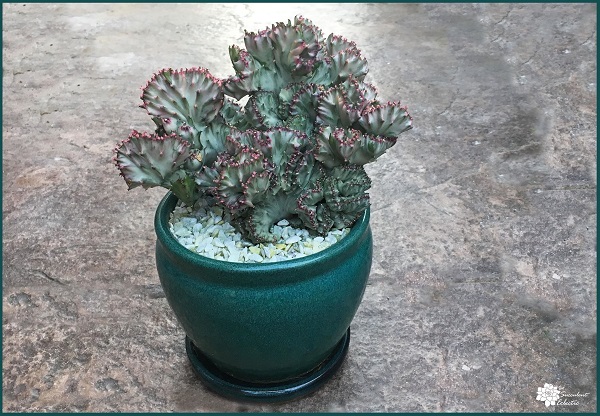
Every crested and monstrose succulent develops into a fantastical form unique to the individual plant. Plants evolve their growth rates, shape and sizes over millions of years to enable them to thrive in their native habitat. So it’s no surprise that these one-of-a-kind plants are a bit more sensitive to environmental pressures than their un-crested counterparts. Crested and monstrose cactus and succulents are actually quite stable and able to grow for years with care. They tend to be even more sensitive to over-watering and fertilizing than un-crested plants of the same species. The abnormal tissues are more prone to splitting, rotting or additional injury. Provide the same lighting and temperature controls you would for that succulent variety, just give the crested form even less water, less often and with less fertilizer. This is known as growing the plant “harder”.
PropagatingPropagating (PRAH-puh-gate-ing) a plant is to grow another p... and Pruning Crested and Monstrose Cactus
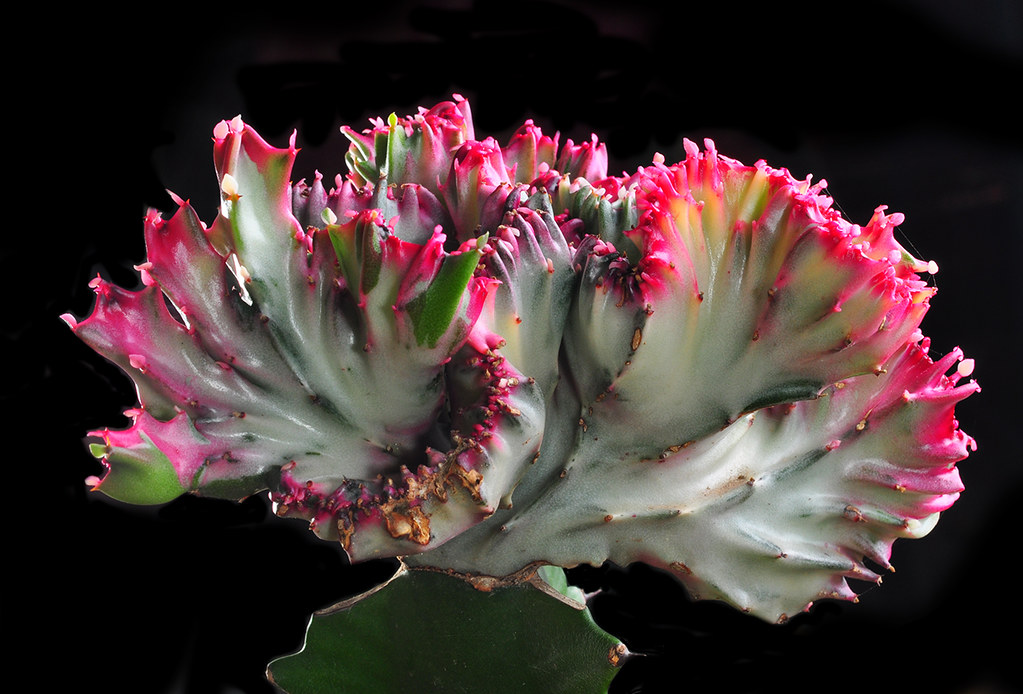
photo credit Bill Gracey | (CC BY-NC-ND 2.0)
Because crested and monstrose succulents are the result of injury and not heredity, the fabulous forms are not passed down to the plant’s offspring. You cannot get more crested succulents through collecting and sowing seeds from the plant. Instead, crested succulents are propagated from cuttings taken from a part of the plant that is cresting. These cuttings are generally grafted to a hardy cactus rootstock, the way moon cactus are. Grafting helps to make the plant more stable, as the root structure is provided by a vigorous, un-injured plant.
In time, you may see a normal succulent develop a crest. Sometimes a crested or monstrose cactus develops normal growth. It may sprout from the rootstock or the plant may revert to normal growth patterns. If you want to maintain the crested form, cut back any shoots of normal plant growth. In time, normal growth can out-compete the crested growth and cause the entire plant to revert.
Buying Crested Succulents and Monstrose Cactus
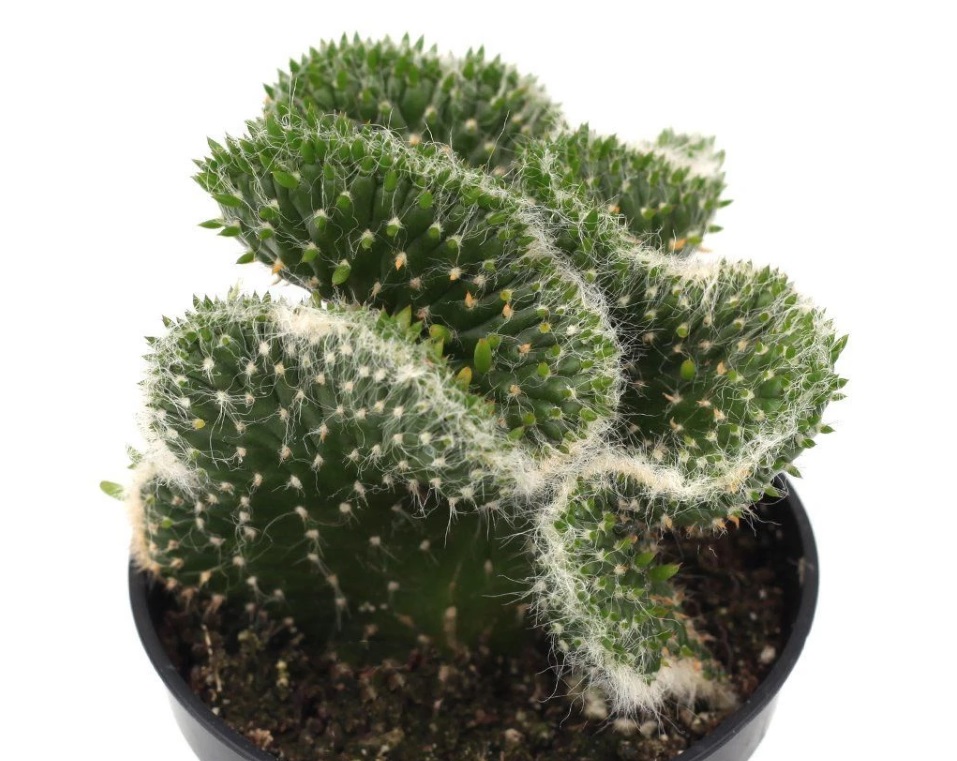
photo credit Leaf and Clay
Many succulent lovers go wild for the bizarre forms of crested and monstrose succulents. Although they are rare, you can find good quality crested succulents pretty easily. Sometimes, even at big box stores. My favorite succulent vendors are great sources for these spectacular plants. Leaf & Clay offers an intriguing array of 16 different named monstrose and crested succulents. For some, like Echeveria ‘Cubic Frost™’, they carry both the normal and crested varieties. Mountain Crest Gardens offers a few crested succulents as well as a few monstrose varieties. The Succulent Source has an ever-changing selection of crested and monstrose succulents and cactus. Some of their selection, especially the larger specimens, allow you to choose the exact crested or monstrose plant you want.
You’ll also find crested and monstrose succulents on Amazon and here on Etsy. Wherever you get your plant, I hope you’ll give one of these phantasmagorical beauties a try!
I hope you’ve enjoyed this walk on the wild side. Do you already grow crested succulents, or do you plan to give one of these phantasmagorical beauties a try? I’d love to hear from you! Please take a moment to leave me a comment and let me know. Especially if you have any questions!
’til next time,
P.S. For more succulent info — and to just make my day! — please subscribe to The Succulent Eclectic! I’ll send you my FREE course, 7 Steps to Succulent Success. Thanks!
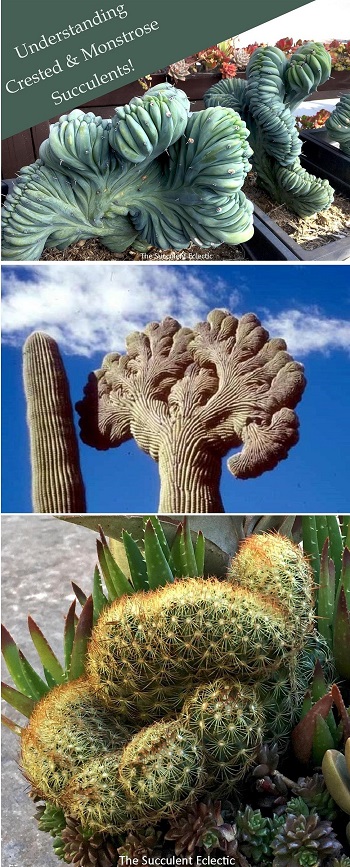
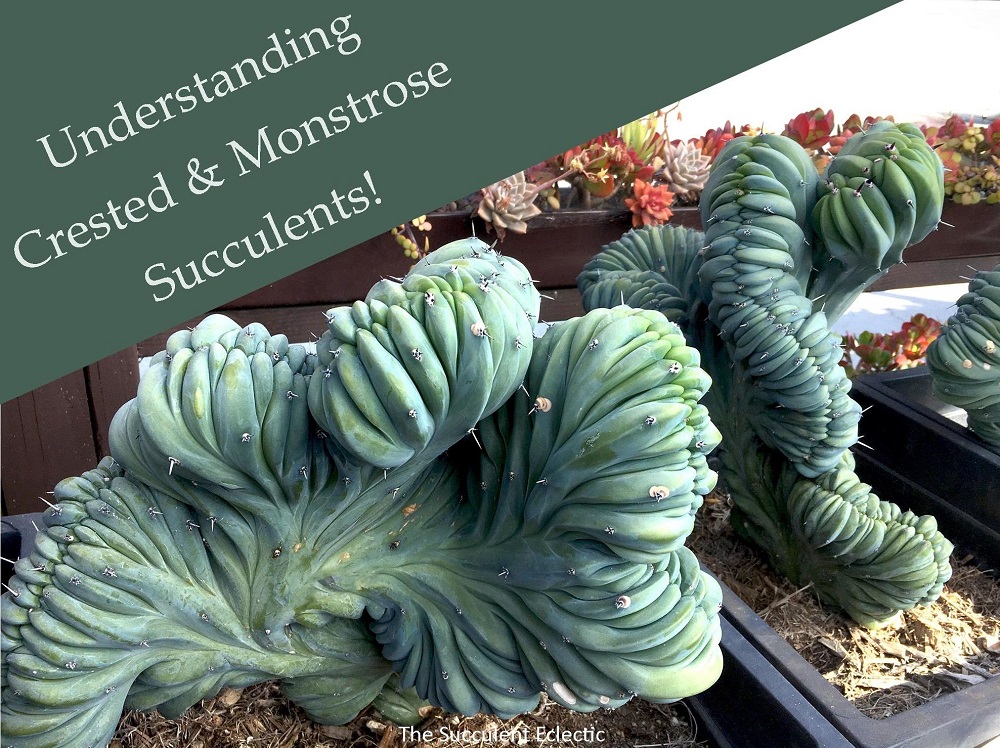
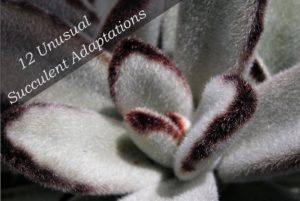

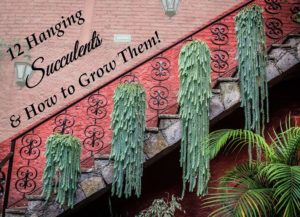
Bought a grafted (8th picture down with pink tips) cactus, care as per usual for succulents but the top gradually just dried up, became hard & woody & in no time, a goner. Went to a few sites including your FB group to get some answers.
Apparently the top & bottom plants have different requirements for sun & water. If that is true, why in the world would nurseries do that knowng it will eventually kill the plant? Asking because I really love it & dying to get another but chances are high it will die too so any tips you can give will be much appreciated.
Thank you.
Hi Carol,
That is definitely one of the frustrations of loving Moon Cactus. Yes, the top and bottom cactus types in a grafted cactus often have wildly different care needs, which makes the resulting plant pretty short-lived. A couple of years is about the max.
Unfortunately, they do this because it’s so profitable. The grafted cactus are really cute and people buy them, never realizing they have a built-in “expiration date.” Worse, some people fall in love with them, buying more and more, trying to figure out what they’re doing wrong that the plants keep dying… 🙁
If you can enjoy the plants for the couple of years they offer, then discard it without pain, then good! Provide bright, indirect light, but never direct sun. Be sure to cut back any side branches that develop under the graft, or the bottom plant will quickly take over. Moderate, indoor temperatures are best, though they can be happy in bright shade outdoors in late spring and summer.
Enjoy!
~Kat